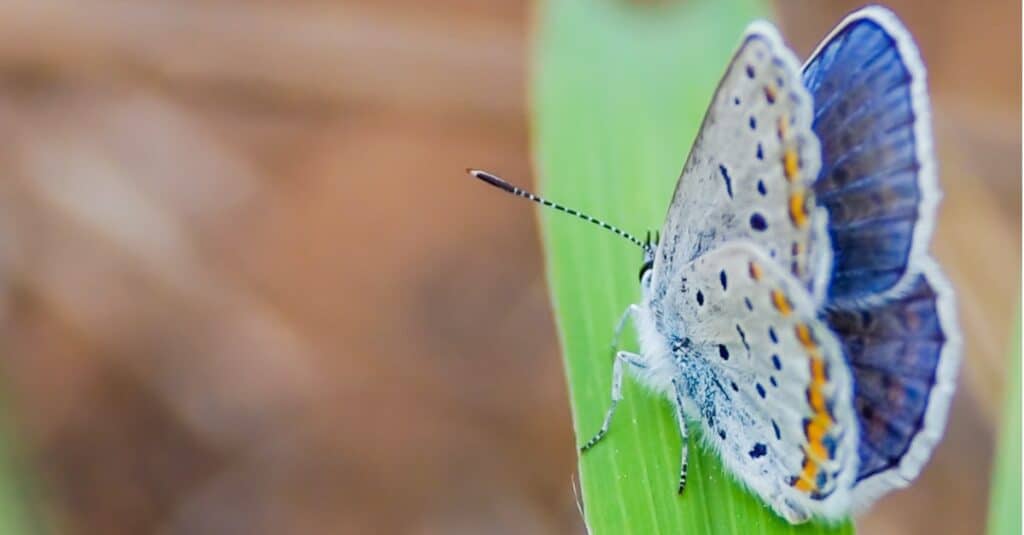The Merrimack River, one of New England’s most important water sources, ranges in depths from as shallow as a few feet up to 43.5 feet at its deepest point. The river flows south out of New Hampshire, where it’s at its shallowest, and sinks deeper into its lowest point at Lowell, MA, before eventually meeting the Atlantic Ocean.
The Merrimack River is a vital transportation and recreation resource for the communities along its banks. The river is home to various fish and wildlife and is a popular spot for fishing, swimming, and boating. The river is also a significant source of drinking water for the region.

The highway runs next to the Merrimack River in the downtown urban core of Manchester New Hampshire.
©iStock.com/ChrisBoswell
The Merrimack River was an essential waterway along which several New England communities chose to settle and rely on it for drinking water. The river houses hundreds of fish and wildlife species and provides ample opportunities for riverside activities such as swimming and boating. Many companies also harness Merrimack’s flow to transport goods up and down New England.
The Merrimack’s History
The Merrimack is a critical natural feature and central component of New Hampshire and Massachusetts communities, giving its name to the Merrimack Valley. Dozens of cities developed along its shores, later using the Merrimack to power textile mills in the 19th century. Newburyport, MA, a small town at the mouth of the Merrimack, originally was a vital shipbuilding hub that received timber floating downriver from New Hampshire.
Restoration of the Merrimack River
Despite being an important water source for the Merrimack Valley and surrounding communities, the Merrimack River has faced pollution issues since the 1950s. The discharge from the industrial textile mills and other human waste seeped into the river, leading to discoloration, unusual odors, and vegetation. In fact, in the 1960s, the Merrimack was considered one of the ten most polluted rivers in the United States because it has never been cleaned.

Many volunteers from the Merrimack Valley have worked hard to improve the river’s cleanliness.
©Dmytro Flisak/Shutterstock.com
This changed in 1972 when the U.S. government passed the Federal Clean Water Act. By law, factories had to treat their sewage before dumping it into waterways. The new rules also created funding to improve the river’s infrastructure and wastewater treatment systems, which made a noticeable change in the Merrimack’s cleanliness. With improved water quality, much of the river’s original natural wildlife, including fish, birds, and other creatures, returned to the scene. Citizens have volunteered to keep the Merrimack clean, allowing these species to continue to thrive.
Yet, despite citizen-driven efforts, the Merrimack River is reportedly one of the most endangered waterways in the country. In 2016, a report cited stormwater runoff, bacteria, sewage runoff, and algal blooms among the top concerns surrounding river cleanliness and health. New Hampshire and Massachusetts government officials have sought funding from the U.S. Environmental Protection Agency (EPA) to continue cleaning efforts and preventative measures to restore the Merrimack.
Ecology of the Merrimack River
The ecosystem of the Merrimack River is home to many plant and animal varieties. The river itself hosts over 100 fish species, including striped bass and salmon. Beavers and river otters make their home up and down the river’s length, while waterfowl such as herons and ducks rely on the Merrimack for fresh water and food.
The Merrimack River is home to rarer species, such as the endangered Karner blue butterfly, a small population of butterflies residing only in the river’s corridor. Other rare plant and animal species spotted along the Merrimack include:
- Spotted turtle
- Wood turtle
- Fowler’s toad
- American climbing fern
- American eel
- Brook floater mussel

Only one population of the Kerner blue butterfly exists in New England: along the banks of the Merrimack River.
©iStock.com/BobGrif
What to Do on the Merrimack River
The Merrimack’s many miles of riverbank provide ample water-going opportunities and activities for those seeking outdoor recreation. Visitors can swim, fish, or participate in water sports like rafting and kayaking. However, state advisories recommend visitors avoid swimming in the river after storms or rains. Debris and bacteria can build up in the water, which can cause harm to humans.
Many trails wind alongside the Merrimack, providing relaxing views for hikers to enjoy on their walks. You can also spot many members of the rivers’ wildlife species that we mentioned above.
Where is the Merrimack River Located on a Map?
The Merrimack River originates in central New Hampshire and winds 115 miles long to reach the Atlantic Ocean in Newburyport, Massachusetts. It’s the fourth-largest watershed in New England and covers over 5,000 square miles in the region.
The photo featured at the top of this post is © iStock.com/ChrisBoswell
Thank you for reading! Have some feedback for us? Contact the AZ Animals editorial team.







